
Sleepy Hollow Cemetery in Sleepy Hollow, New York, is the final resting place of numerous famous figures, including Washington Irving, whose 1820 short story "The Legend of Sleepy Hollow" is set in the adjacent burying ground at the Old Dutch Church of Sleepy Hollow. Incorporated in 1849 as Tarrytown Cemetery, the site posthumously honored Irving's request that it change its name to Sleepy Hollow Cemetery. It was listed on the National Register of Historic Places in 2009.
Trinity Church is a historic parish in the Episcopal Diocese of New York, whose church is located at 89 Broadway opposite Wall Street, in the Financial District of Lower Manhattan in New York City. Known for its centuries of history, prominent location, distinguished architecture and bountiful endowment, Trinity's congregation is said to be "high church," its activities based on the traditions of the Episcopal Church and the worldwide Anglican Communion in missionary outreach, and fellowship. In addition to its main church, Trinity parish maintains two chapels: St. Paul's Chapel, and the Chapel of St. Cornelius the Centurion on Governors Island. The Church of the Intercession, the Trinity Chapel Complex and many other of Manhattan's Anglican congregations were once part of Trinity parish. Columbia University was founded on the church's grounds as King's College in 1754. To some, the congregation epitomizes White Anglo-Saxon Protestant culture in the United States.
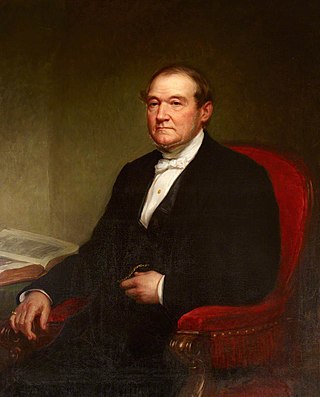
William Backhouse Astor Sr. was an American business magnate who inherited most of his father John Jacob Astor's fortune. He worked as a partner in his father's successful export business. His massive investment in Manhattan real estate enabled major donations to the Astor Library in the East Village, which became the New York Public Library.

The Astor family achieved prominence in business, society, and politics in the United States and the United Kingdom during the 19th and 20th centuries. With Italian German ancestral roots in the Italian and Swiss Alps, the Astors settled in Germany, first appearing in North America in the 18th century with John Jacob Astor, one of the wealthiest people in history.

The parish of Trinity Church has three separate burial grounds associated with it in New York City. The first, Trinity Churchyard, is located in Lower Manhattan at 74 Trinity Place, near Wall Street and Broadway. Alexander Hamilton, Albert Gallatin, and Robert Fulton are buried in the downtown Trinity Churchyard.
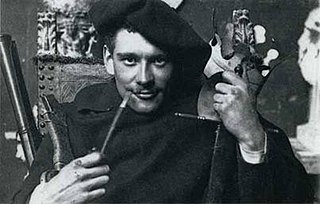
Robert Winthrop Chanler was an American artist and member of the Astor and Dudley–Winthrop families. A designer and muralist, Chanler received much of his art training in France at the École des Beaux-Arts, and there his most famous work, titled Giraffes, was completed in 1905 and later purchased by the French government. Robert D. Coe, who studied with him, described Chanler as being "eccentric and almost bizarre." Chanler rose to prominence as an acclaimed American artist when his work was exhibited in the 1913 Armory Show in New York City.

Lewis Stuyvesant Chanler was an American lawyer and politician who served as Lieutenant Governor of New York from 1907 to 1908.
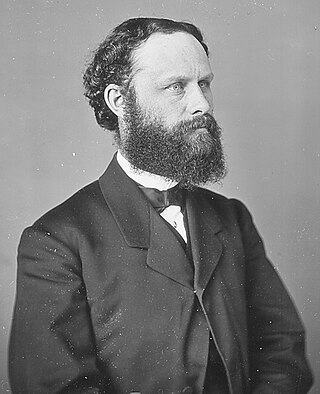
John Winthrop Chanler was a prominent New York lawyer and a U.S. Representative from New York. He was a member of the Dudley–Winthrop family and married Margaret Astor Ward, a member of the Astor family.
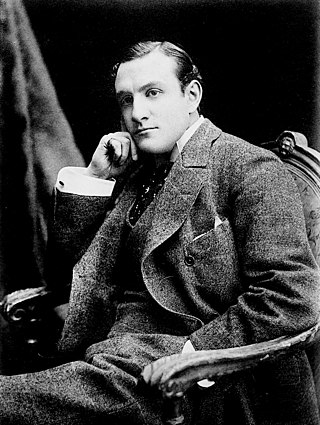
William Astor "Willie" Chanler was an American soldier, explorer, and politician who served as U.S. Representative from New York. He was a son of John Winthrop Chanler. After spending several years exploring East Africa, he embarked on a brief political career. Chanler regarded it as an American obligation to be on the side of the people who fought for their independence, and during his life he participated in rebellions and independence struggles in Cuba, Libya, and Somalia. He provided support for insurgents in Venezuela, Turkey, and China. He maintained an active lifestyle even after losing his right leg in 1915. Late in life, he became a novelist and an outspoken antisemite.
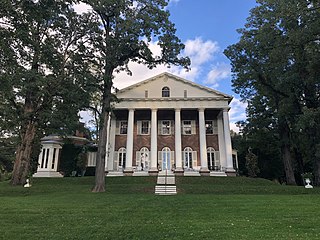
Edgewater is an architecturally significant, early 19th-century house located near the hamlet of Barrytown in Dutchess County, New York, United States. Built about 1824, the house is a contributing property to the Hudson River Historic District. Edgewater's principal architectural feature is a monumental colonnade of six Doric columns, looking out across a lawn to the Hudson River. Writing in 1942, the historians Eberlein and Hubbard described Edgewater as an exemplar of "the combined dignity and subtle grace that marked the houses of the Federal Era."
Theodore Ward Chanler was an American composer.
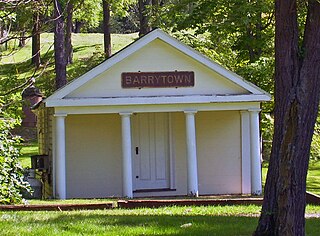
Barrytown is a hamlet within the town of Red Hook in Dutchess County, New York, United States. It is within the Hudson River Historic District, a National Historic Landmark, and contains four notable Hudson River Valley estates: Edgewater, Massena, Rokeby, and Sylvania.
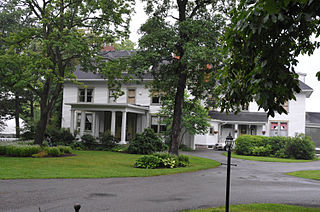
Sweet Briar is a historic farm house located near Geneseo in Livingston County, New York.

Rokeby, also known as La Bergerie, is a historic estate and federally recognized historic district located at Barrytown in Dutchess County, New York, United States. It includes seven contributing buildings and one contributing structure.

John "Archie" Armstrong Chaloner was an American writer and activist, known for his catch phrase "Who's looney now?".

Elizabeth Astor Winthrop Chanler Chapman was an American heiress and socialite during the Gilded Age.

Winthrop Astor Chanler was an American sportsman and soldier who fought in the Spanish–American War and World War I.
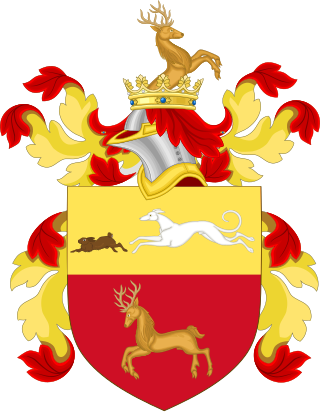
The Stuyvesant family is a family of American politicians and landowners in New York City. The family is of Dutch origin and is descended from Peter Stuyvesant (1610–1672), who was born in Peperga, Friesland, Netherlands and served as the last Dutch Director-General of New Netherland.

Beatrice Minerva Ashley Chanler, also known as Minnie Ashley, was an American stage actress, artist, and author. She was active in charity and philanthropy during World War I and World War II.
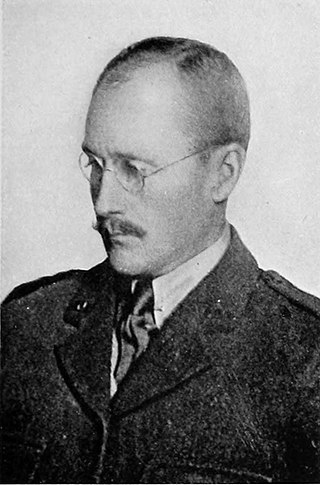
Christopher Temple Emmet was an American attorney and sportsman.






















